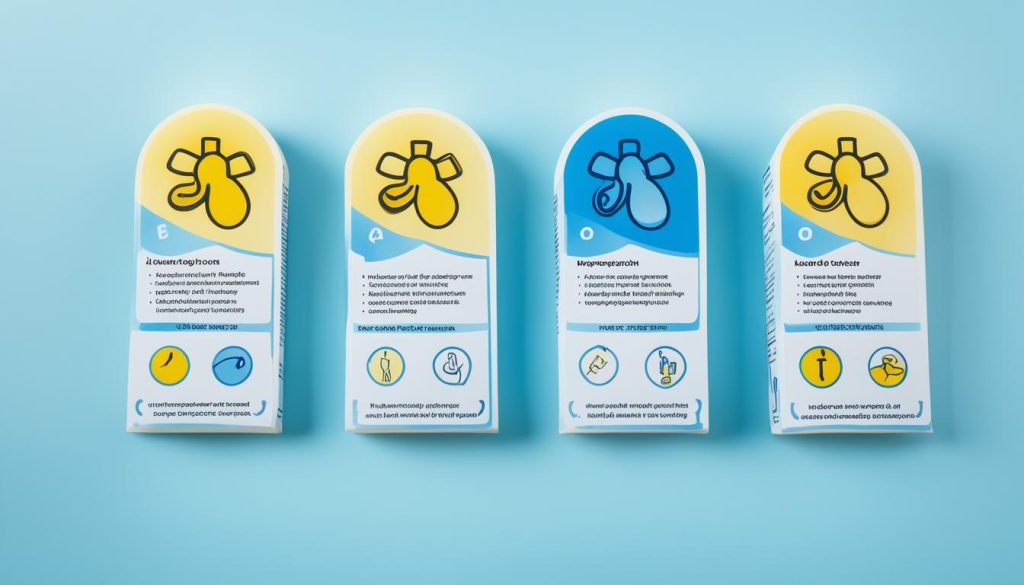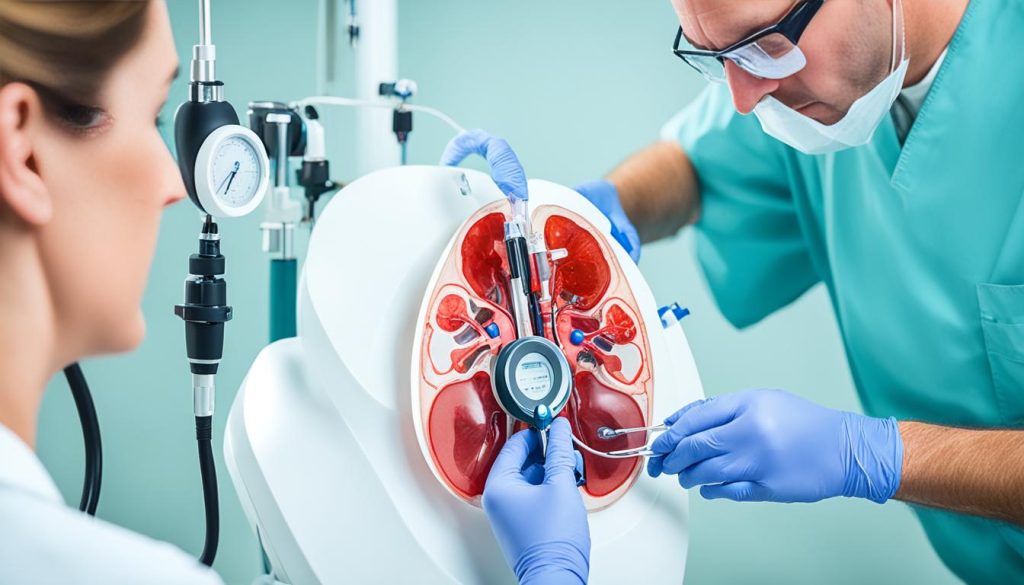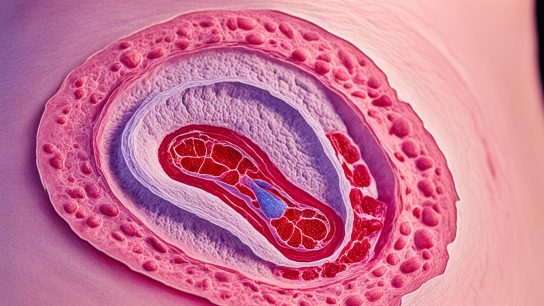More than 37 million American adults are living with kidney disease, and most don’t know it. Symptoms of kidney disease often go unnoticed until the late stages of the disease. Only 10% of people with chronic kidney disease are aware that they have it. Recognizing the early warning signs is crucial for early detection and treatment. It is recommended that individuals at risk for kidney disease, such as those with high blood pressure, diabetes, a family history of kidney failure, or people over the age of 60, get tested annually for kidney disease.
In this article, we will explore the three key early warning signs of kidney disease, the importance of early detection and treatment, and how you can maintain kidney health. Understanding these signs can help you take proactive steps to protect your kidneys and overall well-being.
Let’s dive in to discover the early warning signs of kidney disease and how you can recognize them:
What Are the 3 Early Warning Signs of Kidney Disease?
Recognizing the early symptoms of kidney disease is crucial for its early detection and prompt treatment. Here are some warning signs that may indicate the presence of kidney disease:
- Feeling tired or having low energy levels: Kidney disease can cause a buildup of toxins in the body, leading to fatigue and a lack of energy.
- Difficulty concentrating: Reduced kidney function may affect cognitive abilities, resulting in trouble focusing or thinking clearly.
- Trouble sleeping: Kidney disease can disrupt sleep patterns, causing insomnia or restless nights.
- Dry and itchy skin: Impaired kidney function can lead to the accumulation of waste products in the bloodstream, leading to dry and itchy skin.
- Increased frequency of urination: Kidney disease can lead to changes in urinary patterns, including the need to urinate more frequently, especially at night.
- Blood in the urine: Hematuria, or blood in the urine, can be a sign of kidney damage or other urinary tract issues.
- Foamy urine: The presence of excessive foam in the urine, resembling bubbles, may indicate protein leakage, a common symptom of kidney disease.
- Puffiness around the eyes: Swelling or puffiness around the eyes, known as periorbital edema, can occur due to fluid retention caused by kidney dysfunction.
- Swelling in the ankles and feet: Decreased kidney function can lead to sodium retention and fluid buildup, causing swelling in the lower extremities.
- Poor appetite: Kidney disease can cause a loss of appetite or a decreased interest in food, leading to unintended weight loss.
- Muscle cramps: Electrolyte imbalances resulting from impaired kidney function can lead to muscle cramps or spasms.
It’s important to note that these symptoms can vary in severity and may not necessarily indicate kidney disease. Consulting a healthcare professional for a proper diagnosis and personalized advice is recommended.

Fatigue and Weakness
Feeling tired and experiencing a lack of energy are common early warning signs of kidney disease. As kidney function decreases, toxins and impurities build up in the blood, causing individuals to feel fatigued, weak, and have difficulty concentrating. These symptoms can greatly impact daily life and overall well-being.
One factor that contributes to fatigue in individuals with kidney disease is anemia. Anemia occurs when the kidneys are unable to produce enough red blood cells, leading to a decrease in oxygen-carrying capacity. This can result in feelings of weakness, exhaustion, and shortness of breath.
Understanding Anemia in Kidney Disease
Anemia is a common complication of kidney disease and can exacerbate feelings of fatigue and weakness. The kidneys play a vital role in producing erythropoietin, a hormone that stimulates the production of red blood cells. When kidney function is impaired, the production of erythropoietin is hampered, leading to decreased red blood cell production.
Without an adequate number of red blood cells, the body is unable to transport oxygen efficiently, resulting in fatigue and a lack of energy. Individuals with kidney disease may also experience other symptoms of anemia, such as pale skin, dizziness, and cold hands and feet.
Seeking Medical Advice
If you are experiencing unexplained fatigue and weakness, especially if you are at risk for kidney disease, it is important to seek medical advice. Your healthcare practitioner can evaluate your symptoms, perform necessary tests, and provide appropriate guidance and treatment options.
Managing fatigue and weakness caused by kidney disease involves addressing the underlying condition and adopting lifestyle changes. Treatment options may include managing blood pressure and blood sugar levels, adjusting medications, and incorporating a kidney-friendly diet. Additionally, your healthcare provider may recommend iron supplements or erythropoiesis-stimulating agents (ESAs) to help manage anemia and alleviate fatigue.

| Common Symptoms of Kidney Disease-Related Fatigue and Weakness |
|---|
| Feeling constantly tired |
| Lack of energy |
| Difficulty concentrating |
| Shortness of breath |
| Pale skin |
| Cold hands and feet |
Swelling and Edema
Swelling, also known as edema, can be a sign of kidney dysfunction. When kidney function decreases, it can lead to sodium retention, causing swelling in the ankles and feet. Swelling can also be a symptom of heart disease or poor circulation. If you notice swelling in your legs, ankles, or other parts of your body, it is important to consult a healthcare practitioner to determine the underlying cause.
1. What Causes Swelling in Kidney Disease?
Swelling in kidney disease is primarily caused by the kidneys’ inability to properly filter fluids and remove waste from the body. This leads to fluid buildup, resulting in edema. Sodium retention adds to the problem, as excess sodium levels can cause the body to retain more water and contribute to swelling.
2. Where Does Swelling Occur?
Swelling in kidney disease typically affects the ankles and feet, but it can also occur in other parts of the body, such as the hands, face, or abdomen. The severity of the swelling can vary from mild to severe, depending on the individual’s kidney function and overall health.
3. Managing Swelling in Kidney Disease
To manage swelling in kidney disease, it is important to address the underlying cause. This may involve making lifestyle changes, such as reducing salt intake, staying hydrated, and maintaining a healthy weight. In some cases, medications may be prescribed to help improve kidney function and reduce swelling.
4. When to Seek Medical Attention
If you experience persistent or worsening swelling, it is important to seek medical attention. A healthcare practitioner can evaluate your symptoms, perform necessary tests, and develop a treatment plan tailored to your specific needs. Early intervention and management of kidney disease can help slow its progression and prevent further complications.
| Signs and Symptoms of Swelling in Kidney Disease | Causes |
|---|---|
| Swelling in the ankles and feet | Decreased kidney function, sodium retention |
| Swelling in the hands, face, or abdomen | Fluid buildup, impaired fluid filtration by the kidneys |
| Prolonged or worsening swelling | Underlying kidney disease, poor circulation, heart disease |
Changes in Urination
Changes in urination can serve as an early warning sign of kidney disease. These changes encompass various urinary symptoms that should not be ignored. Be aware of any alterations in urination patterns, as they can provide vital clues regarding your kidney health.
The following urinary symptoms may indicate a potential kidney disease:
- Increased or decreased frequency of urination: Pay attention to any significant changes in the number of times you urinate throughout the day.
- Foamy urine: If your urine consistently appears foamy or frothy, it could be a sign of protein leakage, which may be associated with kidney dysfunction.
- Pale or dark urine: Urine color can provide insights into your overall health. Any unusual coloration, such as excessively pale or dark urine, should be evaluated.
- Blood in the urine: The presence of blood in the urine, known as hematuria, requires immediate medical attention. It may indicate kidney damage or other urinary tract issues.
It is crucial to note that changes in urination can sometimes be symptoms of other urinary tract issues or dehydration. Therefore, it is essential to consult a healthcare practitioner for proper evaluation and diagnosis. Prompt medical intervention can facilitate early detection and appropriate treatment of kidney disease or other underlying conditions.

| Urinary Symptom | Possible Significance |
|---|---|
| Increased or decreased frequency of urination | Potential indication of kidney disease or urinary tract issues |
| Foamy urine | May suggest protein leakage associated with kidney dysfunction |
| Pale or dark urine | Unusual coloration may require further evaluation |
| Blood in the urine | Immediate medical attention needed, as it may signify kidney damage or urinary tract issues |
Importance of Early Detection and Treatment
Early detection and treatment play a crucial role in managing kidney disease and preventing complications. By identifying the disease at an early stage, individuals have a greater chance of slowing its progression and improving long-term outcomes. Routine blood tests can even detect kidney disease before any symptoms manifest, allowing for timely intervention.
Regular check-ups with a healthcare practitioner are vital in monitoring kidney function and identifying any potential issues. Through these check-ups, healthcare professionals can assess kidney health, track changes, and tailor treatment plans accordingly. This proactive approach helps individuals stay informed about the status of their kidneys, ensuring prompt action if necessary.
Treatment for kidney disease depends on the underlying cause. It may involve various strategies, such as lifestyle modifications, medications, and, in advanced cases, dialysis or kidney transplantation. Lifestyle changes often focus on managing blood pressure, controlling diabetes, maintaining a healthy weight, and adopting a balanced diet.
Medications prescribed for kidney disease aim to address specific symptoms, manage complications, or slow down its progression. They can help regulate blood pressure, control anemia, reduce swelling, and maintain overall kidney function. Healthcare practitioners work closely with patients to determine which medications are suitable and adjust them as needed.
In more advanced stages of kidney disease, dialysis or transplantation may be necessary. Dialysis helps replace the lost kidney function by filtering waste and excess fluid from the blood artificially. A kidney transplantation, on the other hand, involves replacing a failed kidney with a healthy one from a donor. These treatments can significantly improve quality of life and overall health for individuals with end-stage kidney disease.
By emphasizing the importance of early detection and treatment, healthcare professionals aim to empower individuals to take control of their kidney health. Through education and regular healthcare interactions, individuals can make informed decisions, adopt healthy habits, and monitor their kidney function closely. This proactive approach not only helps manage kidney disease but also promotes overall well-being.

Benefits of Early Detection and Treatment:
- Slows down the progression of kidney disease
- Prevents or manages complications
- Improves overall kidney function
- Enhances quality of life
- Reduces the need for advanced treatments like dialysis or transplantation
Conclusion
Recognizing the early warning signs of kidney disease is essential for maintaining kidney health. By being aware of these signs, individuals can take proactive steps to prevent kidney disease or effectively manage the condition. Lifestyle choices such as quitting smoking, maintaining a healthy weight, staying hydrated, and managing blood pressure and diabetes play a vital role in kidney disease prevention.
Regular check-ups and open communication with healthcare practitioners are crucial for early detection and appropriate treatment of kidney disease. Routine blood tests can help identify kidney disease in its early stages, even before symptoms appear. This early intervention can help slow the progression of kidney disease and improve long-term outcomes.
In conclusion, maintaining kidney health requires a proactive approach. By understanding the early warning signs, making healthy lifestyle choices, and regularly monitoring kidney function, individuals can reduce the risk of kidney disease and ensure their overall well-being. Remember, prevention is always better than cure when it comes to kidney health.
FAQ
1. What are the early warning signs of kidney disease?
The early warning signs of kidney disease include fatigue and weakness, swelling in the ankles and feet, and changes in urination.
2. What are the signs of kidney disease?
Signs of kidney disease may include feeling tired or having low energy levels, difficulty concentrating, trouble sleeping, dry and itchy skin, increased frequency of urination (especially at night), blood in the urine, foamy urine, puffiness around the eyes, swelling in the ankles and feet, poor appetite, and muscle cramps.
3. What are the symptoms of fatigue and weakness in kidney disease?
In kidney disease, fatigue and weakness can arise due to the buildup of toxins and impurities in the blood, as well as complications such as anemia. These symptoms can make individuals feel tired, weak, and have difficulty concentrating.
4. How does kidney disease cause swelling and edema?
Decreased kidney function can lead to sodium retention, causing swelling in the ankles and feet. Swelling can also be a symptom of heart disease, kidney disease, or poor circulation.
5. What changes in urination may indicate kidney disease?
Changes in urination that may indicate kidney disease include increased or decreased frequency of urination, foamy urine, pale or dark urine, or the presence of blood in the urine.




